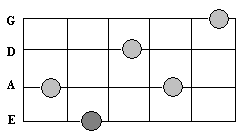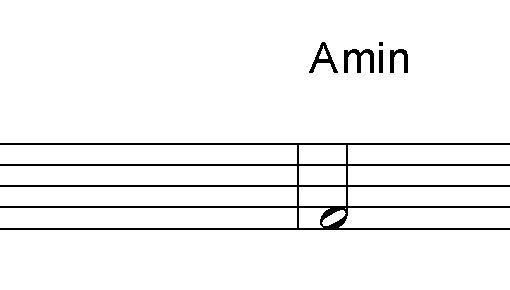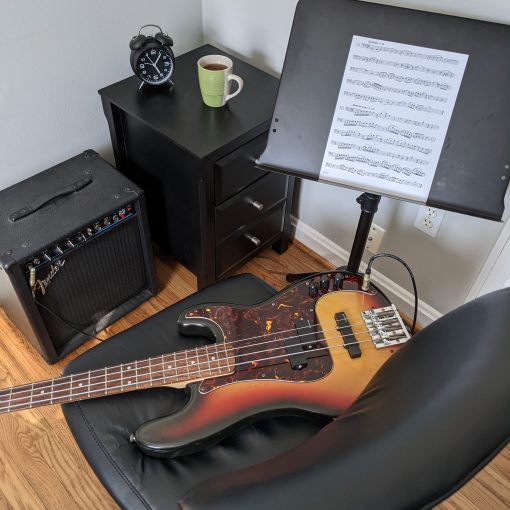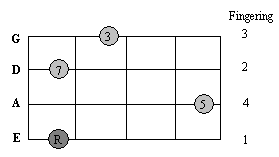Level: advanced
No part of this lesson may be copied, reproduced, or distributed in any form without consent of the author. Copyright © Doug Ross, all rights reserved.
No, it’s NOT okay to ignore those numbers in the chord symbols on your chart! The deeper you get into bass playing, the more you will come to realize that it’s all about outlining the harmony of the tune. Yes, groove and rhythm are great. But every bass line absolutely must fit the chord progression, and if some of those chord symbols look like algebra to you, then you are in danger of hitting clams. This lesson deals with upper chord extensions (9ths, 11ths, and 13ths). Some people call chords with extensions “jazz chords”, but they can turn up in all kinds of music. If you don’t yet have a solid understanding of simple three- and four-note chords, you should first bone up on my previous lesson in major scale harmonization
When we start adding extensions on top of basic 7th chords, the possibilities become seemingly endless, but in practice, only certain extensions are commonly used. Here is a handy-dandy chart summarizing the most commonly applied extensions for each chord quality:

That’s about it, really. Of course, other possibilities do exist, but this chart covers all of the most common extensions. All other extensions either clash with a basic chord tone (ex. #9 on a major chord clashes with the major 3rd), or are redundant (ex. #9 on a minor chord IS the minor 3rd). In the case of dominant chords containing an 11, the 3rd is usually omitted.
Among the many dominant chord options, you will usually only use one extension on each scale degree, though various 9ths, 11ths, and 13ths may be combined freely. For example, you wouldn’t see a dominant chord with both a b9 and a 9, but you might see one with a b9 and a #11 and a 13.
Based on context, some extensions tend to be favored over others at any given time, and that’s a subject for another lesson. For now, just try playing these extensions, one at a time, on top of your basic 7th chord arpeggios to get a sense of how they sound, and where they lay on the bass. Here’s how a Major 7 sharp eleven chord will look (the dark note on the E string is the root):

Practice this with all chord types, and with every extension in the above chart. Then the next time you see C7(b9) chord on a chord chart, you’ll know where that b9 is, even if you don’t actually play it. And you will understand the importance of NOT playing a major 9th (in any octave) against that chord. There is a lot of flavor in these extensions, and mastering them will help you to “fine tune” your bass lines to the harmony.



